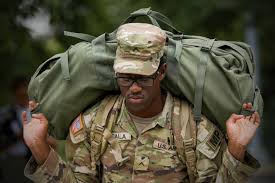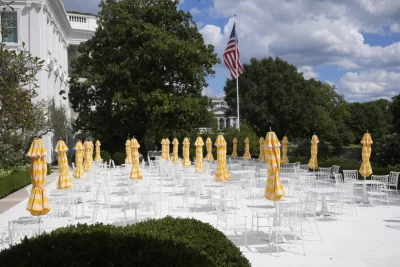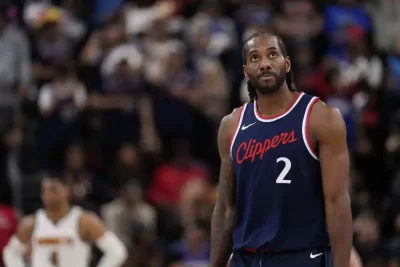
Mayor Muriel Bowser pledged to work alongside the federal officials Trump has tasked with overseeing the city’s law enforcement, while insisting the police chief remained in charge of the department and its officers.
“How we got here or what we think about the circumstances — right now we have more police, and we want to make sure we use them,” she told reporters.
The tone was a shift the day before, when Bowser said Trump’s plan to take over the Metropolitan Police Department and call in the National Guard was not a productive step and argued his perceived state of emergency simply doesn’t match the declining crime numbers. Still, the law gives the federal government more sway over the capital city than in U.S. states, and Bowser said her administration’s ability to push back is limited.
Attorney General Pam Bondi, meanwhile, called the Tuesday morning meeting productive in a social media post and said the Justice Department would “work closely with the D.C. city government” to “make Washington, D.C., safe again.”
The city and Trump have had a bumpy relationship
While Trump invokes his plan by saying that “we’re going to take our capital back,” Bowser and the MPD maintain that violent crime overall in Washington has decreased to a 30-year low after a sharp rise in 2023. Carjackings, for example, dropped about 50% in 2024 and are down again this year. More than half of those arrested, however, are juveniles, and the extent of those punishments is a point of contention for the Trump administration.
Bowser, a Democrat, spent much of Trump’s first term in office openly sparring with the Republican president. She fended off his initial plans for a military parade through the streets and stood in public opposition when he called in a multi-agency flood of federal law enforcement to confront anti-police brutality protesters in summer 2020. She later had the words “Black Lives Matter” painted in giant yellow letters on the street about a block from the White House.
In Trump’s second term, backed by Republican control of both houses of Congress, Bowser has walked a public tightrope for months, emphasizing common ground with the Trump administration on issues such as the successful effort to bring the NFL’s Washington Commanders back to the District of Columbia.
She watched with open concern for the city streets as Trump finally got his military parade this summer. Her decision to dismantle Black Lives Matter Plaza earlier this year served as a neat metaphor for just how much the power dynamics between the two executives had evolved.
Now that fraught relationship enters uncharted territory as Trump has followed through on months of what many D.C. officials had quietly hoped were empty threats. The new standoff has cast Bowser in a sympathetic light, even among her longtime critics.
“It’s a power play and we’re an easy target,” said Clinique Chapman, CEO of the D.C. Justice Lab. A frequent critic of Bowser, whom she accuses of “over policing our youth” with the recent expansions of Washington’s youth curfew, Chapman said Trump’s latest move “is not about creating a safer D.C. It’s just about power.”
Where the power actually lies
Bowser contends that all the power resides with Trump and that her administration can do little other than comply and make the best of it. As long as Washington remains a federal enclave with limited autonomy under the 1973 Home Rule Act, she said, it will remain vulnerable to such takeovers.
“We know that access to our democracy is tenuous,” Bowser said. “That is why you have heard me, and many many Washingtonians before me, advocate for full statehood for the District of Columbia.”
Section 740 of the Home Rule Act allows the president to take over Washington’s police for up to 30 days during times of emergencies. No president has done so before, said Monica Hopkins, executive director of the American Civil Liberties Union’s D.C. chapter.




